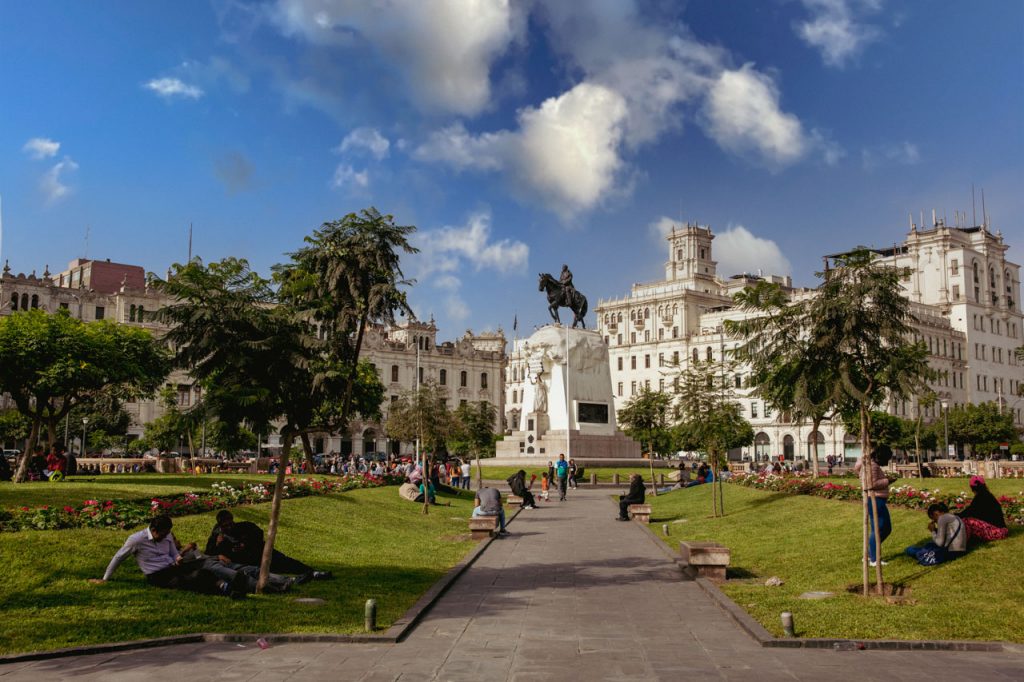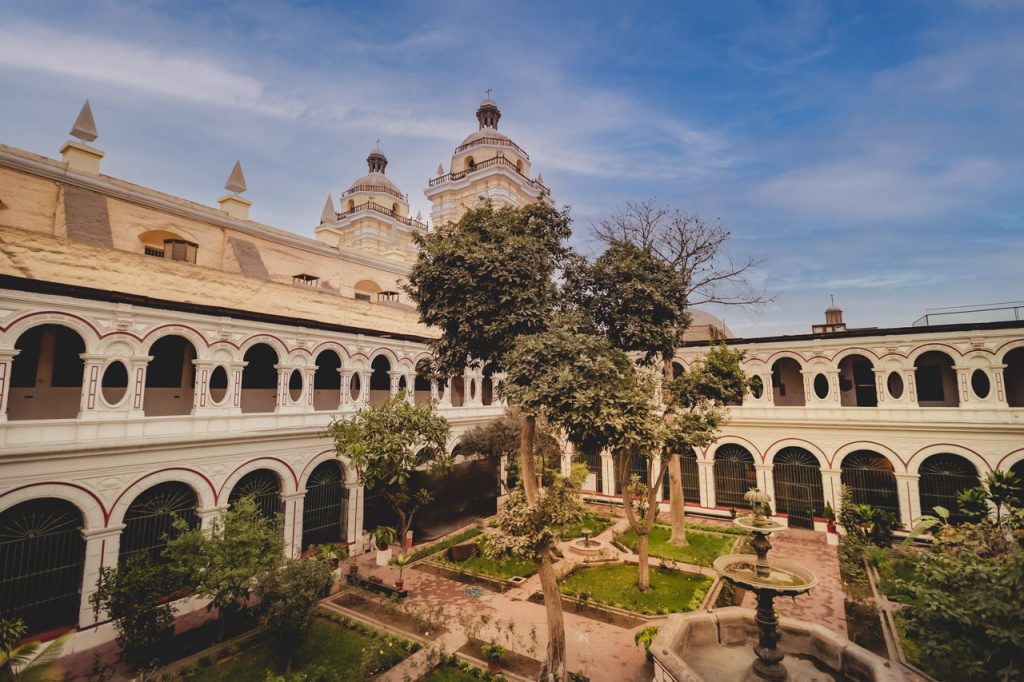During our summer holidays we travelled around Peru, which offered historic cities, stunning natural experiences, world-class food, and an ever-present past that brings the Incas to life. First stop was the capital.
Written by Mette / Photo by Martin
Translated from Danish
Our 19-day journey in Peru begins at the place where the Inca rule, in a way, ended. Namely in the capital of Lima, where the Spanish conquistadors established their headquarters in 1535 and orchestrated South America’s colonization. An exercise of power that a few years later brought the Inca civilization to a brutal end.
It is hard to imagine the atrocities that once took place as we walk around Lima’s historic center on an afternoon. Families and couples snooze on the grass between flowers and palm trees in the central squares, while children playfully run around statues and the fountain with the city’s guardian angel on top.
All around magnificent buildings, palaces, and cathedrals bear witness to a magnificent past. But nevertheless, a large part of them is built on the riches that flowed here in the stream of bloody depredations of the Inca empire.
The Spanish conquerors called Lima the ‘City of Kings’, which, despite major earthquakes that left the city in ruins in 1687 and 1747, still bears the mark of having been the most important city in the overseas colonies. And to such an extent that UNESCO has declared it a world cultural heritage.


Kitchen of kings
Today, the kings of Lima are no longer among the exercisers of power, but in the kitchen. With pots, pans, and local ingredients, the Peruvian chefs have conquered the royal title and positioned the city on the map as South America’s gastronomic capital. As the only South American city, Lima has two restaurants in the Top 10 on the recognized list The World’s 50 Best Restaurants.
All in all, Lima seems to be a Peruvian bouillon cube. During the two days, we spent in the city, we get a concentrated taste of what Peru contains. We visit the ruins of a huge pyramid built before the time of the Incas, and we sneak around the catacombs under the convent church of San Francisco, where thousands of people have been buried since colonial times.
We lose ourselves in the bustle of metropolitan life with shopping centers and eateries, and we follow in the footsteps of Ernest Hemingway as we swing past the city’s oldest bar, El Cordano, located next to the presidential palace and an institution in Lima’s political center.
But where Hemingway presumably ordered strong fluids, we try a ‘chica morada’. A sweet Peruvian drink cooked with purple corn, pineapple, and a handful of spices that tastes a little like Christmas.




Next door to the Pacific Ocean
The next morning, jet lag gets us out of bed before breakfast at the hotel is ready. The city lies sleepily, wrapped in a grey blanket of clouds, and it is only runners and dog walkers that we meet on the green coastal path that skirts the cliffs of the fashionable neighbourhood of Miraflores.
On one side, high-rise buildings and the Andes mountains shoot towards the sky. On the other, the world’s largest ocean roams, as far as the eye can see. And while we content ourselves with waking up the body with two to-go-coffees, paragliders launch from the edge of the bombastic cliffs. A vertical drop of 100 meters above the deep blue waves of the Pacific Ocean, in which the surfers tumble.
“Lima is the only capital in South America that has The Pacific Ocean as a next-door neighbour”, says our guide, who shows us around the city a little later in the day. There is pride in his movement as he throws out his arms like a conductor and pretends to direct the waves’ rhythmic pounding against the shore. The constant roams of the ocean mix with the sounds of the big city and creates a unique soundtrack for our days in Lima.
The sound is sweet music for two foodies like us. The sea contains the main ingredient for the country’s national dish, ceviche. South America’s answer to sushi. The dish consists of fresh and raw fish marinated in lime juice and accompanied by red onion, chilli, boiled corn, sweet potatoes, and fresh herbs. That same evening, we get a taste of the delicacies – and of the Peruvian cocktail Pisco Sour. “Salute!”

MINI GUIDE TO LIMA
Five places you must visit
#1 – The coastal path at Miraflores, where paragliders fly along the bombastic cliffs and surfers tumble in the waves of the Pacific Ocean. Start the walk from the Larcomar shopping center, built into the rocks, and head north through the Parque del Amor park.
#2 – The monastery church of San Francisco, where the construction of the catacombs is quite unconsciously the reason why the building has not collapsed during the many, large earthquakes over time.
#3 – Eat at Restaurant Central voted as Latin America’s best. A four-course menu costs approx. 150 USD. Remember to book a table from home. We regret not doing that.
#4 – The old center of the city with the two large squares Plaza de Armas and Plaza de San Martín, connected by the Jirón de la Unión pedestrian street.
#5 – The districts of Miraflores and Barranco, are the nicest and most bohemian areas of the city. Here you will find plenty of restaurants, shops, and cozy streets. It is also the best place to live as it is safe to walk the streets after dark.


